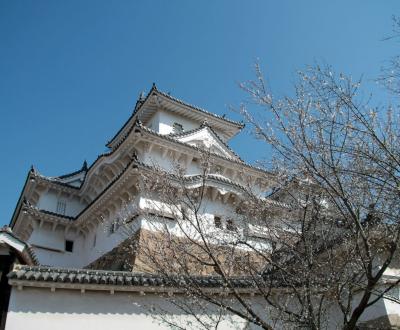Japanese Properties on UNESCO’s World Heritage List
Designated Natural and Cultural Sites in Japan
UNESCO (United Nations Educational, Scientific and Cultural Organization) started to list properties in the World Heritage List in 1978. As of 2020, about 1121 sites were inscribed, distributed among 167 countries in the world. Some of them boast a high number of sites such as: Italy (with 55 properties), China (55), Spain (48), France (45) and Germany (46).
Enlisted natural and cultural heritage is considered of a great value for humankind and the list intends to help protect them. For tourists, it is useful to identify must-see sites, that might not be internationally famous, and to plan their travel itinerary accordingly.
Japan joined the World Heritage Convention in June 1992 and boasts more than 20 properties inscribed in the World Heritage List. Mount Fuji was added in 2013, with a great fuss.
The 26 Japanese Properties inscribed on the World Heritage List
21 Cultural Properties:
- Himeji-jo (1993): Himeji Castle, renovated in 2015.
- Buddhist Monuments in the Horyu-ji Area (1993): in Ikaruga City in the Kansai area.
- Historic Monuments of Ancient Kyoto (Kyoto, Uji and Otsu Cities) (1994): no need to introduce as they are already famous.
- Historic villages of Shirakawa-go and Gokayama (1995): two very typical villages whose access by train is not easy.
- Hiroshima Peace memorial (Genbaku Dome) (1996): a museum in memory of 1945 atomic bombings.
- Itsukushima shinto Shrine (1996): the grand shrine of Miyajima and its huge floating torii.
- Historic Monuments of ancient Nara (1998): the description does not state if deers are included!
- Nikko’s shrines and temples (1999): a popular gateway from Tokyo.
- Gusuku sites and related properties of the Kingdom of Ryukyu (2000): on Okinawa island.
- Sacred Sites and Pilgrimage Routes in the Kii Mountain Range (2004): Kumano Kodo pilgrimage route and the whole peninsula, from Ise to Osaka, including Koya-san and Yoshinoyama.
- Iwami Ginzan Silver mines and its cultural landscape (2007): In Shimane prefecture North to Hiroshima.
- Hiraizumi – Temples, Gardens and Archaeological Sites Representing the Buddhist Pure Land (2011): in the north of Sendai.
- Fujisan, sacred place and source of artistic inspiration (2013): no need to introduce it again.
- Tomioka Silk Mill and Related Sites (2014): in Gunma Prefecture, between Tokyo and Nagano.
- Sites of Japan’s Meiji Industrial Revolution (2015): 23 places in Japan including Gunkanjima / Hashima Island, setting of the James Bond movie Skyfall.
- The National Museum of Western Art in Tokyo, the Architectural Work of Le Corbusier, an Outstanding Contribution to the Modern Movement (2016).
- Sacred Island of Okinoshima and Associated Sites in the Munakata Region (2017), a shinto archipelago open to visitors only on May 27 each year, forbidden to women and limited to 200 men.
- 12 Hidden Christian Sites in the Nagasaki Region (2018).
- Mozu-Furuichi Kofun Group: Mounded Tombs of Ancient Japan (2019): in Osaka.
- Jomon Archaeological Sites in northern Japan, Tohoku and southern Hokkaido, Northern (2021): dating back to 17,000 years BCE.
- The Sado complex of heritage mines, primarily gold mines (2024): off Niigata’s shores.
And 5 Natural sites:
- Yakushima (1993): the famous island and its forest in the south of Kyushu, that inspired Miyazaki for his movie Mononoke Hime.
- Shirakami-Sanchi (1993): with its virgin forest in the north of Honshu.
- Shiretoko (2005): national park on the Shiretoko peninsula, in the north-east of Hokkaido and Japan.
- Ogasawara Islands (2011): a paradisiac archipelago far off in the Pacific Ocean, 1,000km south of Tokyo.
- Amami-Oshima Island, Tokunoshima Island, the northern part of Okinawa Island and Iriomote Island (2021).
4 sites on the "Tentative List"
Japan selected these sites as they are considered worthy of joining the World Heritage List:
- Temples, Shrines and other structures of Ancient Kamakura (1992): a very popular tourist site, close to the capital.
- Hikone-Jo (1992): Hikone Castle with a view on Lake Biwa.
- Asuka-Fujiwara, Archaeological sites of Japan’s Ancient Capitals and Related Properties (2007): in Nara.
- Hiraizumi – Temples, Gardens and Archaeological Sites Representing the Buddhist Pure Land (extension) (2012): in the Tohoku area, north of Sendai.

